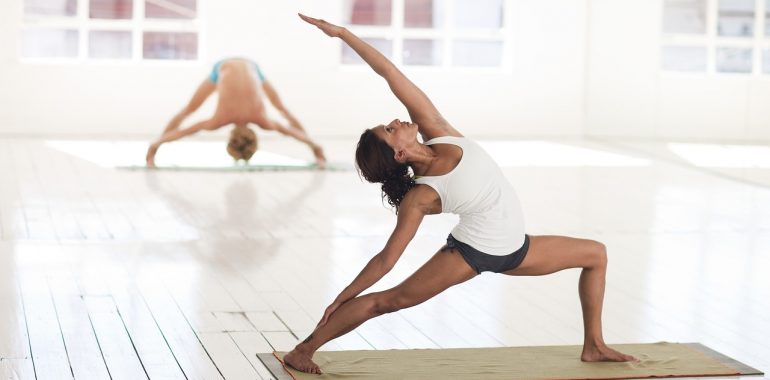Discovering the Therapeutic Benefits of Yoga in Easing Back Discomfort

Discovering the Therapeutic Benefits of Yoga in Easing Back Discomfort
Harnessing the Healing Power of Yoga Poses for Back Pain Relief
In a world where more than 80% of people grapple with the pervasive issue of back pain, the ancient practice of yoga emerges as a promising remedy. Research suggests that yoga stretches, with their holistic approach to mind and body, can alleviate back pain by enhancing strength, flexibility, and overall well-being.
Yoga, renowned for its ability to cultivate physical and mental balance, targets the back through various poses. Among these, the cat-cow, downward-facing dog, and cobra pose stand out as effective tools for pain relief and increased flexibility.
The cat-cow pose, with its rhythmic flexion and extension, proves instrumental in improving back flexibility. Executed on hands and knees, it guides practitioners through a series of movements that gently stretch and strengthen the back muscles.
Downward-facing dog, another staple in the yogic repertoire, extends its benefits to the shoulders, legs, and back muscles. This pose, with its inverted “V” formation, encourages practitioners to align their spine and engage in controlled breathing for a comprehensive experience.
The extended triangle pose not only stretches back muscles but also enhances balance. With arms outstretched in a “T” position, practitioners bend sideways, reaching for the ankle while experiencing a soothing stretch along the opposite side.
For a gentler stretch, the sphinx pose delicately extends the spine, offering a precursor to the more advanced cobra pose. This back-bending asana requires careful execution, with practitioners lifting their chest into a gradual back bend, promoting spine flexibility.
The locust pose enters the arena as a posture promoting improved posture and diminished low back pain. Executed while lying on the stomach, it involves lifting the chest, head, and arms in a controlled back bend, fostering strength in the lower back.
The bridge pose, serving as an alternative to sphinx or cobra pose, incorporates a gentle back bend stretch. This asana involves lifting the hips off the ground while maintaining a straight body from shoulders to hips.
In the realm of seated poses, the half lord of the fishes and two-knee spinal twist offer rotational stretches that improve overall mobility and target back muscles. These poses, executed with deliberate movements, contribute to the multifaceted benefits of yoga.
The child’s pose, a resting posture, serves as a concluding stretch, elongating the spine from neck to tailbone. By kneeling with knees spread wide and bending forward at the hips, practitioners find relief and relaxation for their back.
While yoga poses present a promising avenue for back pain relief, it’s crucial to approach them with caution. Individuals should avoid poses that worsen their symptoms, moving slowly and deliberately to prevent injury. Seeking guidance from certified yoga instructors ensures tailored approaches to individual needs, promoting a safe and effective experience.
Despite the evident benefits, back pain could signify underlying health issues. Consulting with a healthcare provider, especially a physical therapist, before embarking on a yoga journey is prudent. Immediate medical attention is essential if back pain persists for more than a few weeks or is accompanied by alarming symptoms like fever, numbness, or unexplained weight loss.
In essence, yoga, with its diverse array of poses, emerges as a potent ally in the battle against back pain. As research suggests, its benefits extend beyond physical relief to encompass mental well-being. However, the key lies in approaching yoga with mindfulness, seeking professional guidance, and ensuring that health concerns are addressed through dialogue with healthcare providers.